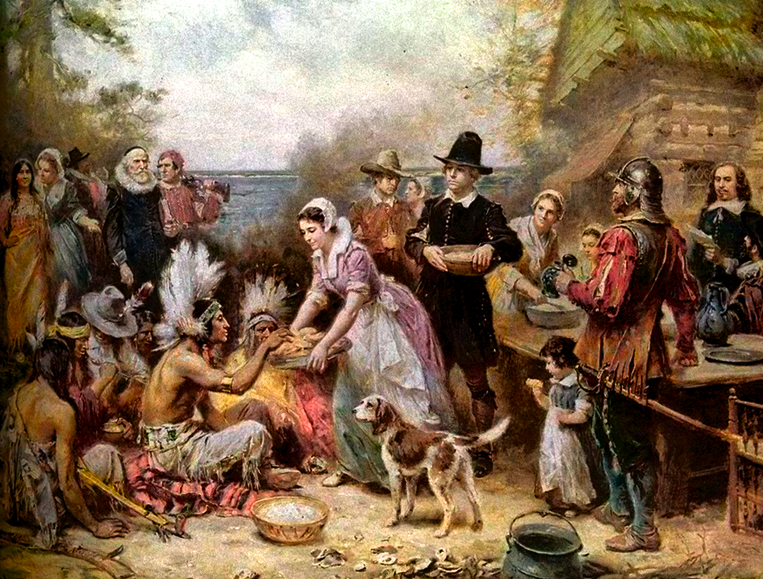Tradition
150 years ago, America was in the middle of a civil war. Initially predicted to last only a short while, the Civil War ended up accounting for more American deaths than any other our country has ever fought.
To raise the nation’s fast-falling spirits, Abraham Lincoln proclaimed the fourth Thursday of November a national holiday in 1863, commemorating the day in 1621 when, after reaping their first successful harvest in the New World, the Pilgrims shared a peaceful feast with the American Indians. The holiday, reminding the nation of peace and gratitude in a time of chaos, was Thanksgiving.
Since then, Thanksgiving has become an important part of American culture. Families gather together every year to celebrate with each other, and, as a result, form their own special traditions.
“My family has a different person carve the turkey every year,” says sophomore Ashley Drath. “Last year it was my older brother, and this year it will be me.”
Communities also have traditions of their own, including ours: This year will be the 31st Lighting of the Doves Festival in The Woodlands. Families’ holidays revolve around this annual event, and they have even incorporated it into their own Thanksgiving Day practices.
“We go to see the tree lighting at Market Street every year,” says junior Jackie Sanchez. “And we also see the Lighting of the Doves there.”
America as a country has customs to celebrate the holiday, such as the Macy’s Thanksgiving Day Parade in New York City. Watching Thanksgiving Day football is another ritual Americans have adopted.
“We watch NFL games every year,” says sophomore Lizzy Spangler. “We don’t watch the Macy’s Thanksgiving Day Parade. We watch people running into each other instead.”
Family has become an important part of Thanksgiving. Students are expecting their relatives to come in, some from different states. Appreciation of extended and immediate families has become simultaneous with the meaning of Thanksgiving: Being thankful for the things in our lives which others might not be as fortunate to have. This has prompted families to form their own unique way of expressing their thanks.
“Usually a week before Thanksgiving, we make a Thankful Tree,” says sophomore Laura Pixton. “It’s where my mom makes a bunch of paper leaves to put in a basket, and every once in a while you go and take a piece of paper and write something you’re thankful for on it. Usually there’s an outline of a tree on our wall, and we go and tape our ‘leaves’ on the branches. Then we can see all the things we have to be thankful about.”
The meaning of Thanksgiving also possesses some religious connotations. When President Lincoln, a Christian, proclaimed the holiday in 1863, he said it was to be a day of “Thanksgiving and Praise to our beneficent Father who dwelleth in the Heavens.” As a result, families have incorporated their beliefs into their celebration of the holiday.
“We make a very big dinner and we get all dressed up,” says sophomore Annalee Abuhamad. “Then, for a while before dinner, we pray and thank God for everything in our lives.”
The first Thanksgiving was a peaceful celebration between the Pilgrims and the local Native Americans. It was the coming together of two vastly different cultures, and this is what American culture is all about: celebrating the Great American Melting Pot. Even today, American families pay tribute to their roots by incorporating their culture’s traditions into the American holiday.
“My mom will always make some Turkish food with our Thanksgiving dinner,” says senior Esra Babaturk. “She’ll roast a turkey, but then she’ll also make Turkish dishes, such as stuffed eggplant, lentil soup, and grapeleaves, and she serves them with the usual food. So we’re celebrating our culture with Thanksgiving. And that’s important to me, because Thanksgiving is all about sharing differences over food.”


